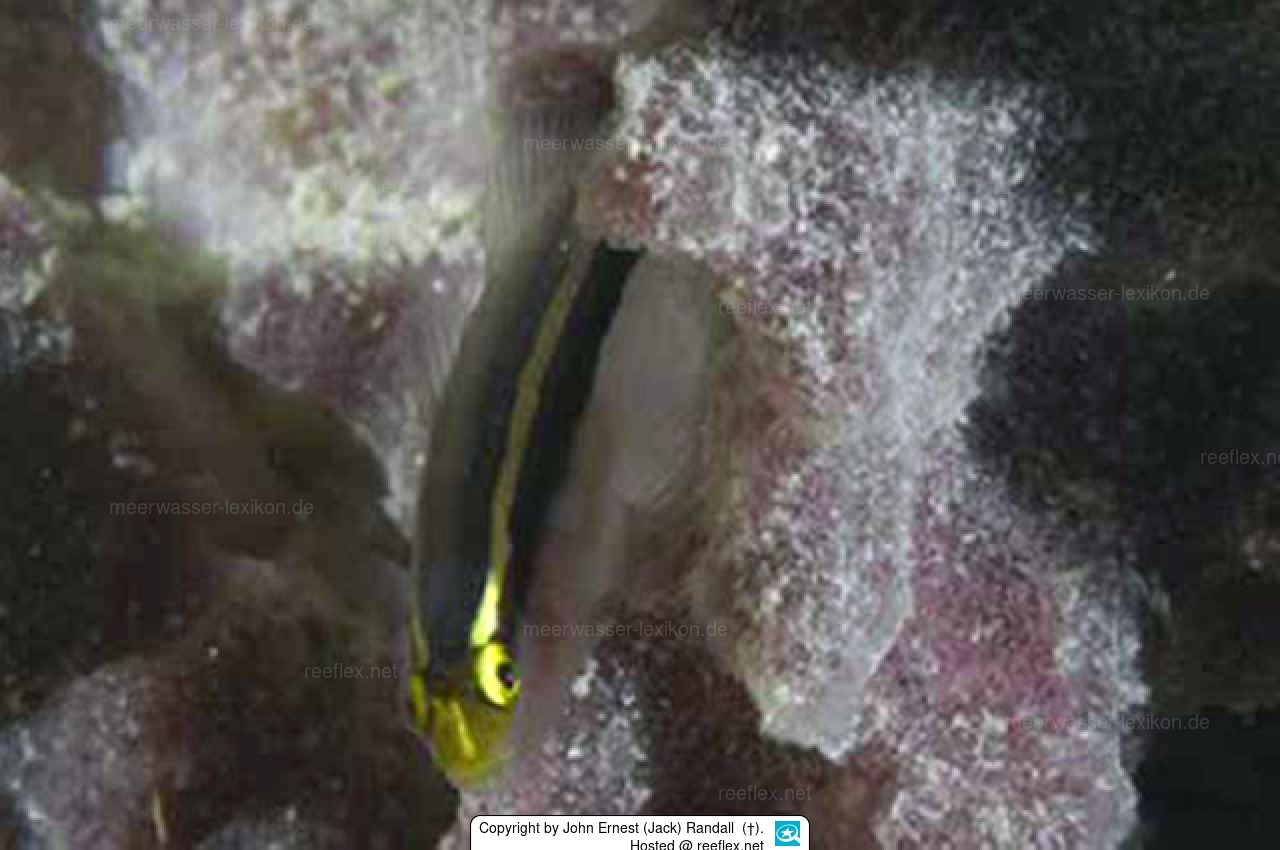Info
Elacatinus colini is only known from the waters around Belize in the Caribbean and only a few photos can be found.
The tiny goby was discovered in a patch reef with mixed corals and sponges on a sloping sand-substrate bottom at a depth of 5 meters.
So far there is no information about aquarium keeping.
Breeding information:
The male (larger animal) guards the attached eggs in the burrow. The goby pair adopts natural or clay tubes (about 2 - 2.5 cm in diameter and a length of about 15cm) for egg laying.
Larvae are reared using the green water technique and also serve to enrich brachionus as food.
The larvae are positively phototactic
Clutch size**: 80 - 200 (depending on the size of the fish)
Hatching period 6-7 days
Re-egg laying* 14 days
Larval size at hatching about 2-3 mm with a small yolk sac
Metamorphosis duration 28 days (from larvae to bottom-dwelling fish) Size approx. 9-10 mm
Larval food
Brachionus rotundiformis (0 - 6 days) food density 10 to 20 per ml
Artemia (6 - 14 days) food density 3 to 9 per ml
Brachionus rotundiformis (6 - 14 days) Feed density 15 per ml (higher survival rate compared to Artemia)
Spawning coloration of males and females - dark gray to black
Regular spawning only over 6 months
* The water temperature influences the number of fertilized eggs and the spawning period (with a difference of e.g. 1° C, the difference can be ± 2-3 days) and, in the case of gonochoristic (separate-sex) fish or shrimp, the sex. If the temperature is below the usual regional temperature, mainly female larvae will hatch from the clutch, above this temperature mainly male larvae will hatch. Furthermore, the aquarium conditions (e.g. light duration, density) can also influence the sex.
** The spawning size or the number of larvae depends on several factors - age and condition of the parent animals, water conditions, food quality, stress factors and the dissolved oxygen content.
Jumping guard
A jumping guard prevents (nocturnal) fish from jumping out.
Wrasses, blennies, hawkfishs and gobies jump out of an unprotected tank in fright if their night rest is disturbed, unfortunately these jumpers are found dried up in the morning on carpets, glass edges or later behind the tank.
https://www.korallenriff.de/en/article/1925_5_Jump_Protection_Solutions_for_Fish_in_the_Aquarium__5_Net_Covers.html
A small night light also helps, as it provides the fish with a means of orientation in the dark!







 Dr. John Ernest (Jack) Randall (†), Hawaii
Dr. John Ernest (Jack) Randall (†), Hawaii
























